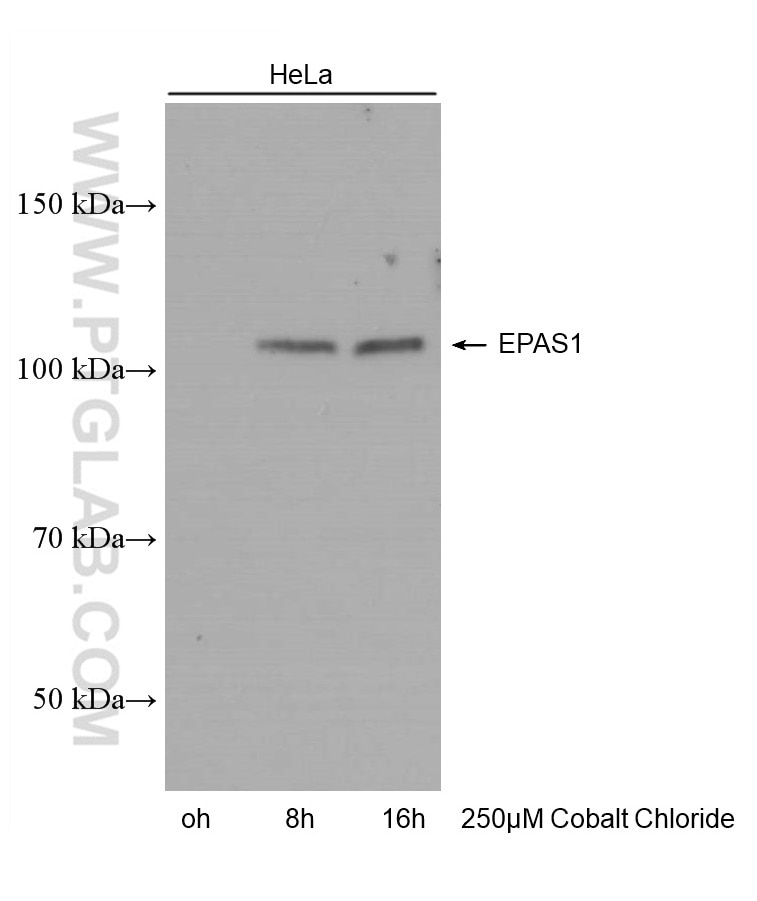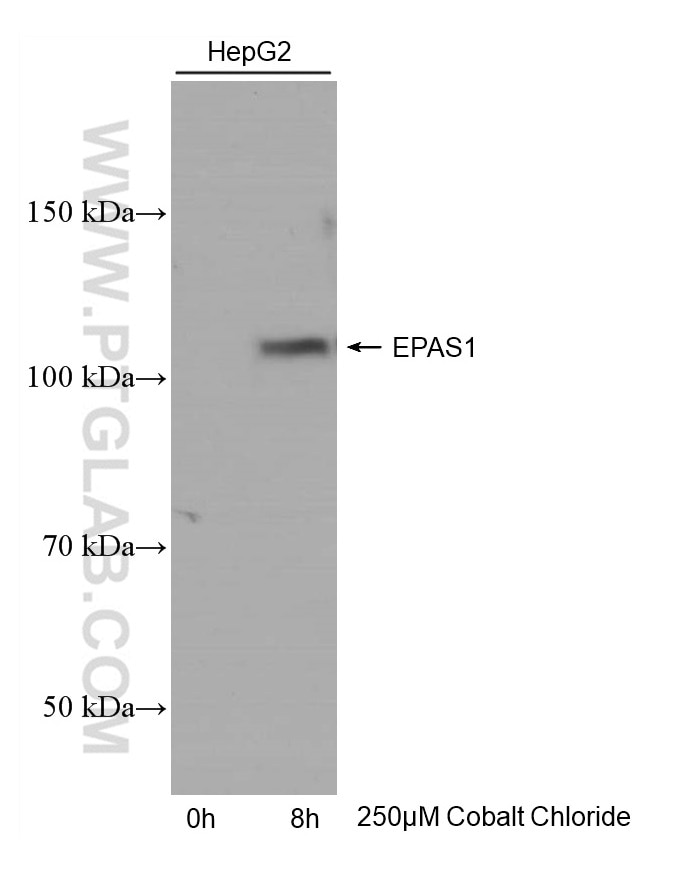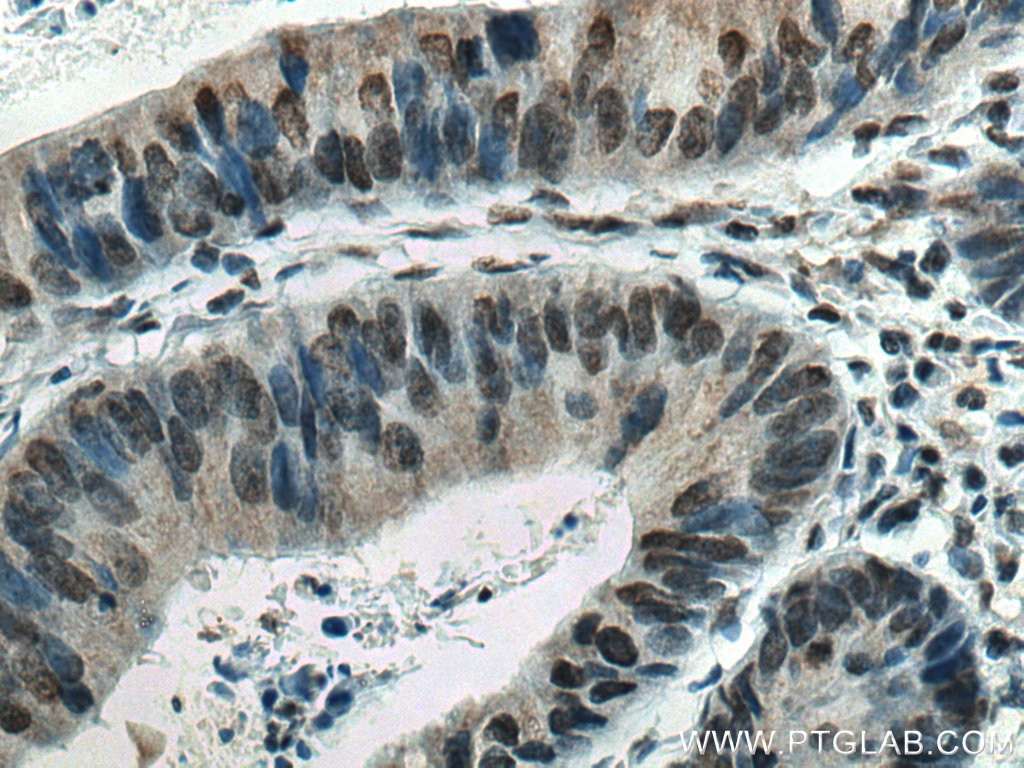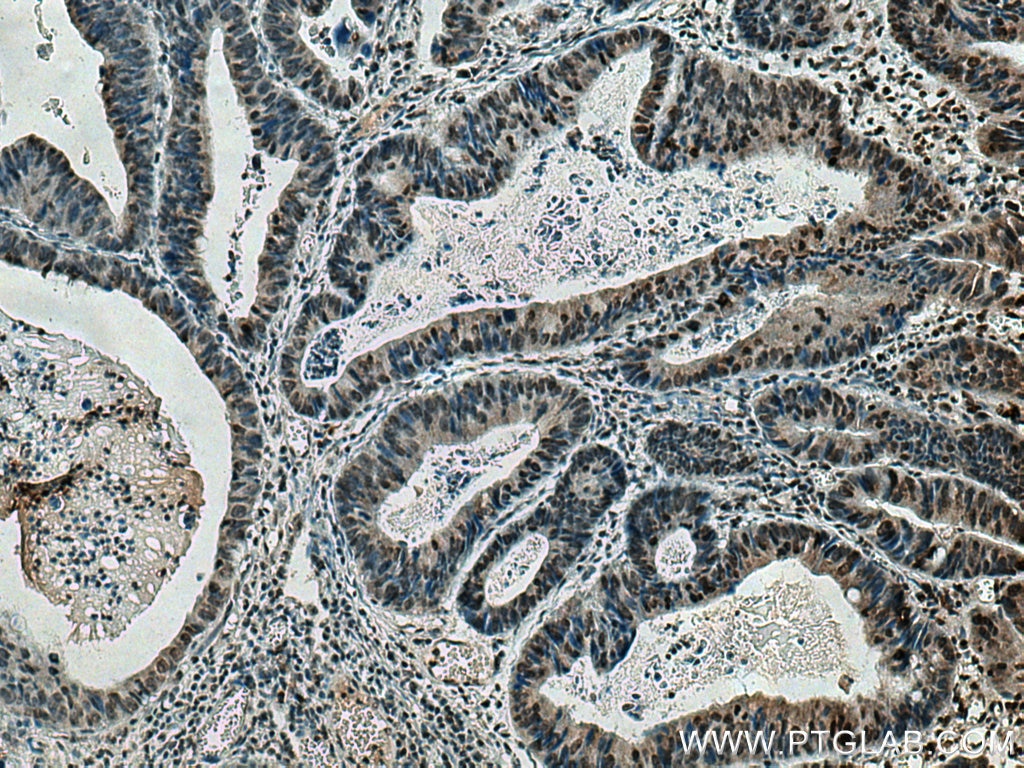Validation Data Gallery
Tested Applications
Recommended dilution
| Application | Dilution |
|---|---|
| It is recommended that this reagent should be titrated in each testing system to obtain optimal results. | |
Product Information
66731-1-PBS targets HIF2α/EPAS1 in WB, IHC, Indirect ELISA applications and shows reactivity with Human samples.
| Tested Reactivity | Human |
| Host / Isotype | Mouse / IgG2a |
| Class | Monoclonal |
| Type | Antibody |
| Immunogen | HIF2α/EPAS1 fusion protein Ag24886 相同性解析による交差性が予測される生物種 |
| Full Name | endothelial PAS domain protein 1 |
| Calculated molecular weight | 96 kDa |
| Observed molecular weight | 120 kDa |
| GenBank accession number | BC051338 |
| Gene Symbol | HIF2α |
| Gene ID (NCBI) | 2034 |
| RRID | AB_2882081 |
| Conjugate | Unconjugated |
| Form | Liquid |
| Purification Method | Protein A purification |
| UNIPROT ID | Q99814 |
| Storage Buffer | PBS only{{ptg:BufferTemp}}7.3 |
| Storage Conditions | Store at -80°C. |
Background Information
Endothelial PAS domain-containing protein 1 (EPAS1), also known as Hypoxia-inducible factor 2-alpha (HIF2-alpha,HIF2A), is a transcription factor involved in the induction of oxygen regulated genes. Binds to core DNA sequence 5'-[AG]CGTG-3' within the hypoxia response element (HRE) of target gene promoters. Regulates the vascular endothelial growth factor (VEGF) expression and seems to be implicated in the development of blood vessels and the tubular system of lung. May also play a role in the formation of the endothelium that gives rise to the blood brain barrier. Potent activator of the Tie-2 tyrosine kinase expression. Activation seems to require recruitment of transcriptional coactivators such as CREBPB and probably EP300. Interaction with redox regulatory protein APEX seems to activate CTAD. EPAS1 is expressed in most tissues, with highest levels in placenta, lung and heart. Selectively expressed in endothelial cells.



